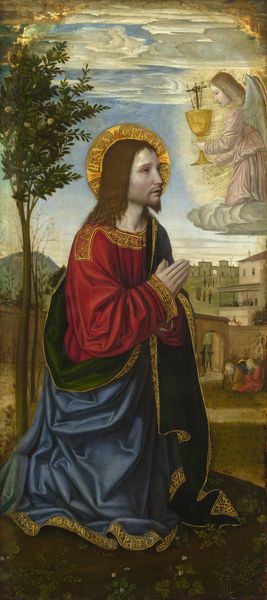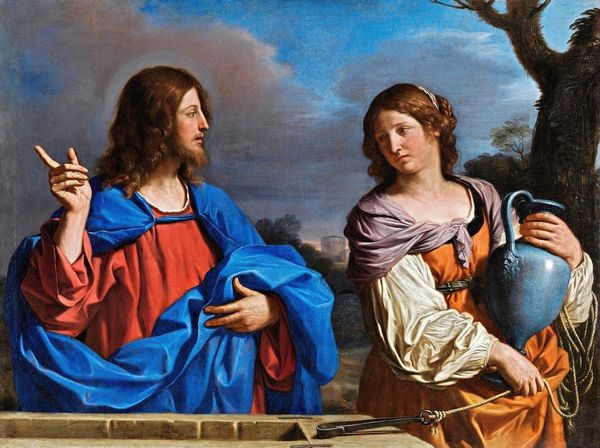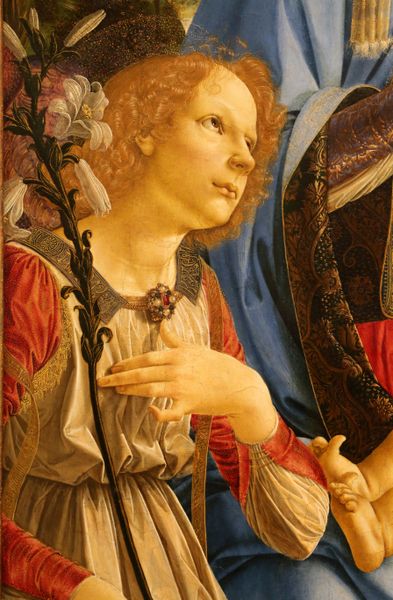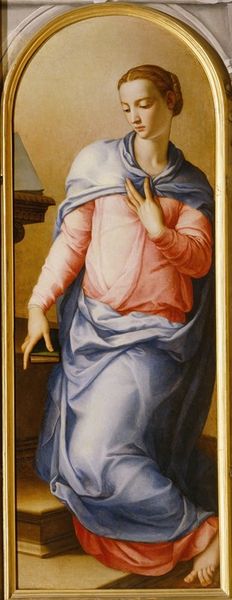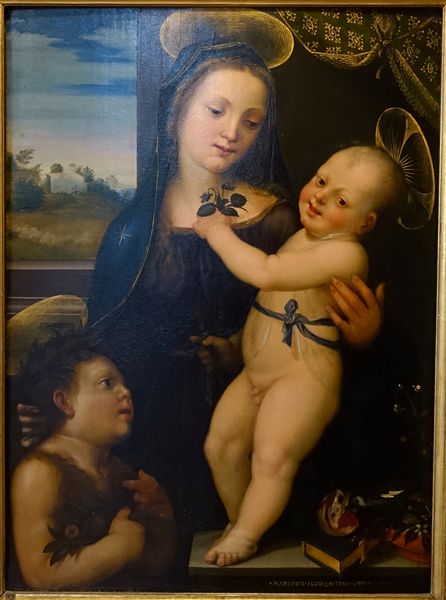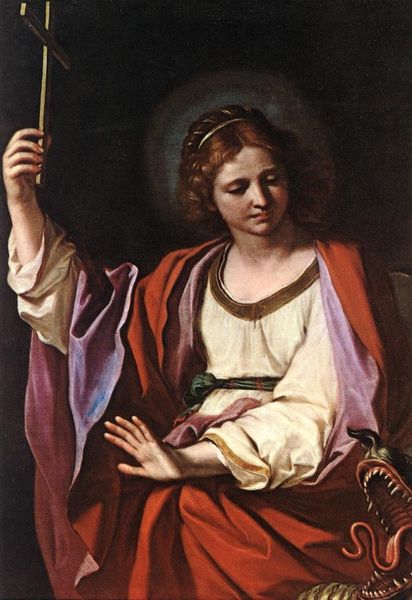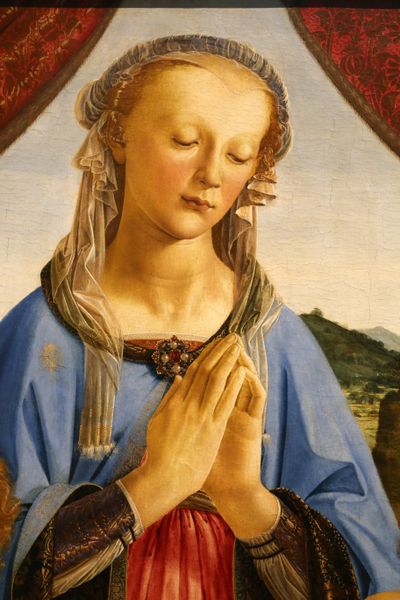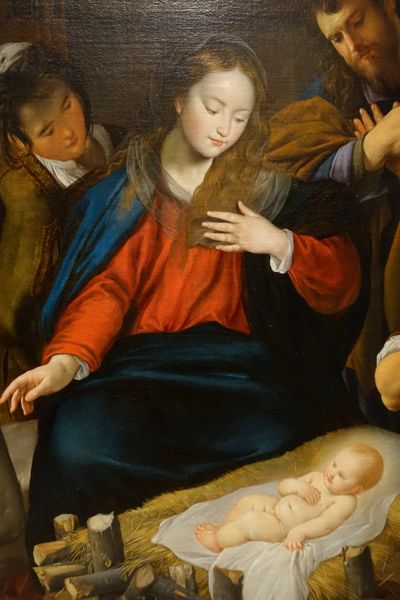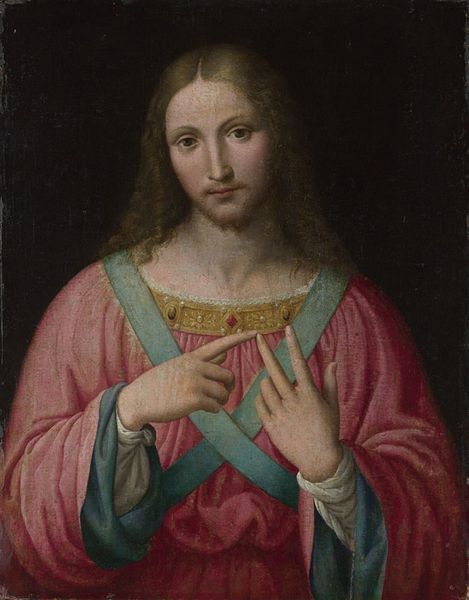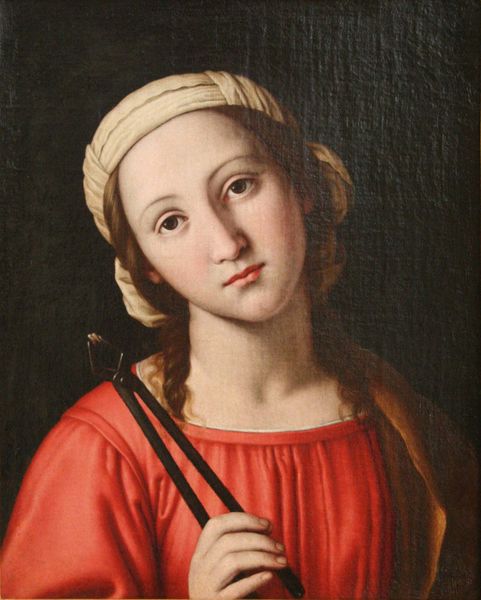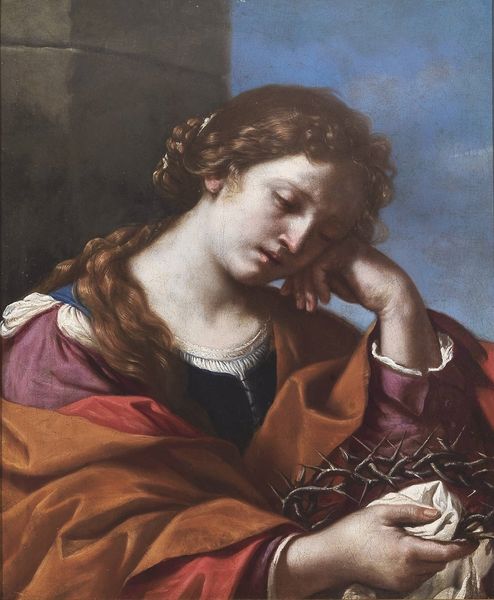
painting, oil-paint
#
portrait
#
painting
#
oil-paint
#
11_renaissance
#
history-painting
#
italian-renaissance
Copyright: Public domain
Piero di Cosimo painted this depiction of St. John the Evangelist sometime in the late 15th or early 16th century. It presents us with a softly lit figure, accompanied by a chalice from which a snake emerges. This image comes from a specific moment in the cultural history of Florence. Though religion remained a powerful force, the humanist interest in classical antiquity was growing. Here, the figure’s androgynous beauty recalls ancient sculpture and an earlier Christian tradition that emphasized John’s youth. At the same time, this painting engages the politics of imagery. As literacy spread, the visual arts became an increasingly important way to communicate religious and moral lessons. The snake, as a symbol of evil, identifies John as the subject of a story about divine protection. Art historians use various methods to analyze paintings like this. By studying contemporary religious writings and earlier visual representations of the subject, we can better understand its role in the visual culture of Renaissance Florence.
Comments
No comments
Be the first to comment and join the conversation on the ultimate creative platform.
